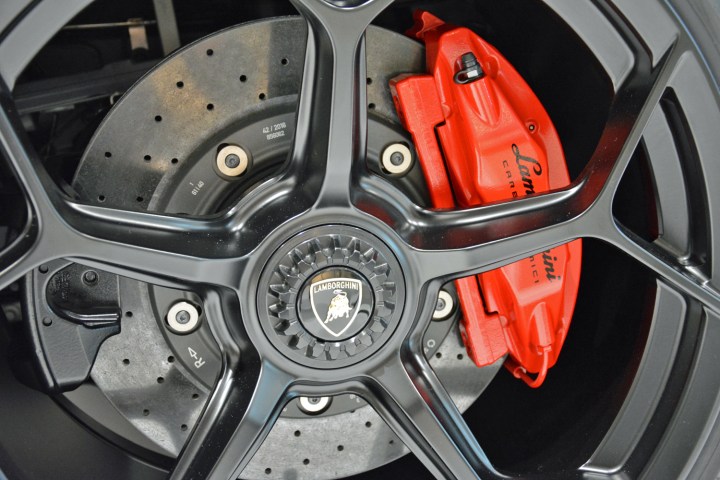
The tremendous forces acting upon the automotive industry won’t make Lamborghini water down its cars. If anything, the storied Italian brand will double down and keep seeking ways to push performance, power, and design to the next level. It’s not ignoring motorists’ call for more in-car tech, however.
“Our clientele is demanding in terms of tech and we are responding,” explained Alessandro Farmeschi, Lamborghini’s chief operating officer, in an interview with Digital Trends. He attributed this ongoing shift to the company’s relatively young clientele. “The average buyer is between 35 and 45 years old, so many of them have technology backgrounds. They’re young entrepreneurs,” he pointed out.
The Urus, the company’s first SUV since the war-zone ready LM002 of the 1980s, boasts a surprisingly high level of technology. Lamborghini installed a driver-configurable digital instrument cluster behind the steering wheel, a solution also found on the brand’s super sports cars, and it embedded two screens in the center console. The top screen runs the infotainment system, the navigation software, and provides connectivity options. The bottom screen lets the front passengers adjust the climate control settings or move the seats, and it also allows them to manually write an address into the infotainment system using handwriting recognition software.
Clearly, this is a new type of Lamborghini. “Those who buy an Urus want to have comfort, they want to have infotainment,” Farmeschi told us. It’s the first of its kind but it won’t be the last.
“For our super sports cars, it’s clear that the level of connectivity we have in the Urus will be a benchmark for the future. I think more and more the new generations are eager to have this kind of connectivity and infotainment,” Maurizio Reggiani, the head of Lamborghini’s research and development department, told Digital Trends. His team focused on connectivity from the get-go. “We designed the car to be more connected, not only with the world but with some service we can offer.”
Infotainment isn’t the only element that will trickle down from the Urus. Reggiani also named the anti-roll system as a tech feature we could see in Lamborghini’s future two-seater models, though it won’t be exactly the same. Lamborghini needed to take into account the possibility of owners going off the beaten path, which isn’t a concern in a car like the Aventador S.
Editors' Recommendations
- Lamborghini’s Urus SE plug-in hybrid tries to do it all
- Bold style alone can’t muscle Chevy’s new Blazer EV to the head of its class
- Lanzador concept previews Lamborghini’s first EV
- Volkswagen is launching its own self-driving car testing program in the U.S.
- This $3 USB adapter fixed all of my Apple CarPlay connection problems




